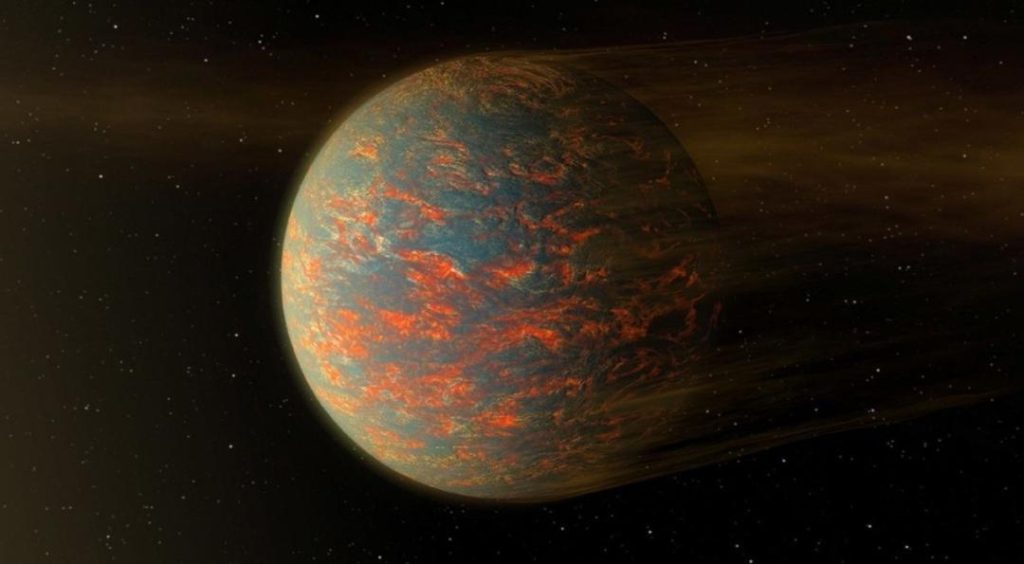
Newly-Discovered Super-Earth Heats Up & Freezes Every 300 Days
In a fascinating discovery, scientists have found a new ‘super-Earth’ orbiting a Sun-like star 20 light-years from Earth. This remarkable planet, which is bigger than our own Earth but lighter than Neptune and Uranus, experiences extreme climate fluctuations, swinging between scorching heat and freezing temperatures roughly every 300 days.
The exoplanet, designated as K2-141b, was discovered using the Kepler space telescope and confirmed by the Transiting Exoplanet Survey Satellite (TESS). According to NASA scientists, K2-141b orbits its star in an oval shape, which leads to its unusual climate patterns.
The Extreme Climate of K2-141b
While the discovery of exoplanets is not new, the extreme climate fluctuations of K2-141b make it particularly fascinating. As the planet orbits its star, it experiences a significant difference in temperatures between its perihelion (the point closest to the star) and aphelion (the point farthest from the star).
The star, a G-type main-sequence star similar to the Sun, emits intense heat and light as it orbits. When K2-141b is closest to the star, it receives an enormous amount of energy, causing the surface temperature to soar to as high as 3,000°F (1,649°C). This is hotter than the surface of Mercury, which is the closest planet to the Sun.
However, as K2-141b moves away from the star, it experiences a drastic drop in temperature, plummeting to as low as -270°F (-168°C). This is even colder than the temperatures on Pluto, which is one of the coldest places in our solar system.
The Implications of K2-141b’s Climate Fluctuations
The extreme climate fluctuations of K2-141b raise several interesting questions about the potential habitability of the planet. While the surface temperature is likely to be inhospitable to most known forms of life, the planet’s atmosphere could still support life if it has a thick enough atmosphere to trap heat.
Additionally, the extreme climate fluctuations could also lead to the formation of complex geological features, such as volcanic activity and tectonic plate movements. This could potentially create a dynamic environment that could support life.
The Search for Life Beyond Earth
The discovery of K2-141b is an important step forward in the search for life beyond Earth. While the planet’s extreme climate fluctuations make it unlikely to support life as we know it, it could still provide valuable insights into the formation and evolution of planetary systems.
The search for life beyond Earth is an ongoing effort, with scientists using a variety of methods to detect biosignatures in the atmospheres of exoplanets. The discovery of K2-141b highlights the importance of continued exploration and research into the properties of exoplanets and their potential for supporting life.
Conclusion
The discovery of K2-141b, a ‘super-Earth’ that heats up and freezes every 300 days, is a fascinating reminder of the diversity of planetary systems beyond our own. While the extreme climate fluctuations of the planet make it unlikely to support life, it could still provide valuable insights into the formation and evolution of planetary systems.
The search for life beyond Earth is an ongoing effort, and the discovery of K2-141b is an important step forward in that search. As scientists continue to explore the properties of exoplanets and their potential for supporting life, we may yet find evidence of life beyond our own planet.
Source:






